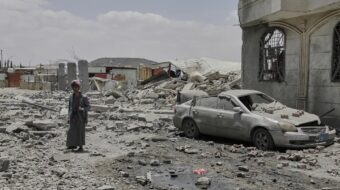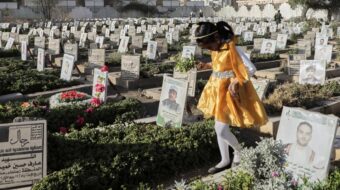Original source: Iranian women’s presence in the social, political, and cultural arena is fairly recent. However, this movement, its progress and its impact, embraces much of Iran’s contemporary history.
Their struggles took shape at the beginning of the 20th century as a movement for the right to education and to visibility in social life.
This took on a more social and political character after the victory of the constitutionalist movement which, in spite of women’s involvement, still denied them the vote.
The first celebration of International Women’s Day in Iran took place in 1922 in the northern city of Rasht. A few years later, records show that celebrations took place publicly in 1928.
But, with the rise to power of Reza Khan in a 1921 coup, the genuine women’s movement faded and independent organisations gradually gave way to those controlled by the government.
There are no records of public events commemorating March 8 during his rule. However, International Women’s Day was celebrated privately in secret at some elite women’s homes.
In 1979, having fought against the Shah and his despotism shoulder to shoulder with men, enduring prison and torture for years under that regime, women were faced with the orders of the new revolutionary government.
The office of Ayatollah Khomeini announced the annulment of the law of family support to the courts and, for the first time, women were banned from becoming judges.
Khomeini later announced that women could work outside their houses, but they must observe full religious dress code – the hijab.
As a result of these declarations, International Women’s Day celebrations turned into widespread demonstrations in Tehran and other cities. This protest was met with violent reprisal from the supporters of compulsory Islamic hijab.
During the 1980s and first half of the ’90s, International Women’s Day was marked secretly in the homes of secular and intellectual women.
But after June 1997 and the election of the reformist government, March 8 celebrations became more widespread, although they was still being held in private.
The year 2000 was a turning point. Women’s rights campaigner Noushin Ahmadi Khorasani invited a group of women to openly and publicly celebrate March 8.
To the organisers’ surprise, more than a 1,000 people attended and the widespread news of the event grabbed society’s attention.
In the spring of that same year, women’s rights activists Shahla Lahiji and Mehrangiz Karthe were incarcerated after criticising their country’s political situation at a conference in Berlin.
The March 8 organising group launched a petition for the release of these two activists. This was the first time that a group of independent women had risen up to collect signatures and to demand the release of two jailed women.
This clearly was not to the liking of the men in the society, whether in the ruling circle or not. This in itself was a lesson for women on the necessity of the independent of activity of women.
The Women’s Cultural Centre is the offspring of this and other experiences of those years.
In 2001, the centre staged the biggest and most creative event of International Women’s Day at the Khaneh Honarmandan (Artist’s House).
In 2002 the centre focused its efforts on the rights of women as citizens and the right to free participation in civic gatherings, selecting Laleh Park as the location for the event.
The park gathering was conducted under heavy control by the police. This was the first time that an International Women’s Day event had been held in an open space in an atmosphere of defiance and protest.
From 2004 onwards, March 8 has become a focus for women’s resistance to injustice accompanied by increased intimidation by the Islamic state desperate to suppress the voices of women.
Celebrations planned for Laleh Park in that year were met by police violence when permits for the gathering where revoked one hour before it was scheduled to take place.
In 2006, Simin Behbahani, the ageing and freedom-fighting Iranian poet, was assaulted by police.
The following year, one week before March 8, 33 women activists were arrested in front of the revolution court.
This group had gathered in support of five of their friends who were on trial at the revolution court for participating in the June 12 protests of the previous year.
On March 8, a protest by female teachers and other freedom-loving women in front of the Islamic Majlis (Parliament) quickly turned to violence and a large number of participants were arrested.
On International Women’s Day last year, women returned to their homes again. Yet this time they were not small and private groups. This time their houses had become public places, but, unfortunately, even homes were not spared from the attack of the security forces.
One of the many events that were held on this day was organised by the Iranian Women’s Centre and The Feminist School.
Prior to the event, police tried to enter the house. Eventually, they arrested two of the school organisers along with the homeowner and took them to the police station. Despite that, the police were not able to break up the programme. The event was held under the pressure and control of security forces.
This year, March 8 is a day when the gaze of the world and the international community is fixed on Iranian women.
These women have obtained the international Simone de Beauvoir prize thanks to their tireless efforts in the One-Million Signatures Campaign. This prize does not belong to one or two people or even a few organisations.
It belongs to all women who have given meaning and purpose to the campaign by their membership, activities, articles, interviews, holding seminars and workshops and signing the campaign’s petition.
March 8 is when Iranian women, encouraged and appreciated by the international community on one hand and under internal threats and pressures on the other hand, celebrate this great day.
Mansoureh Shojaee is one of the key activists of the One-Million Signatures Campaign.










